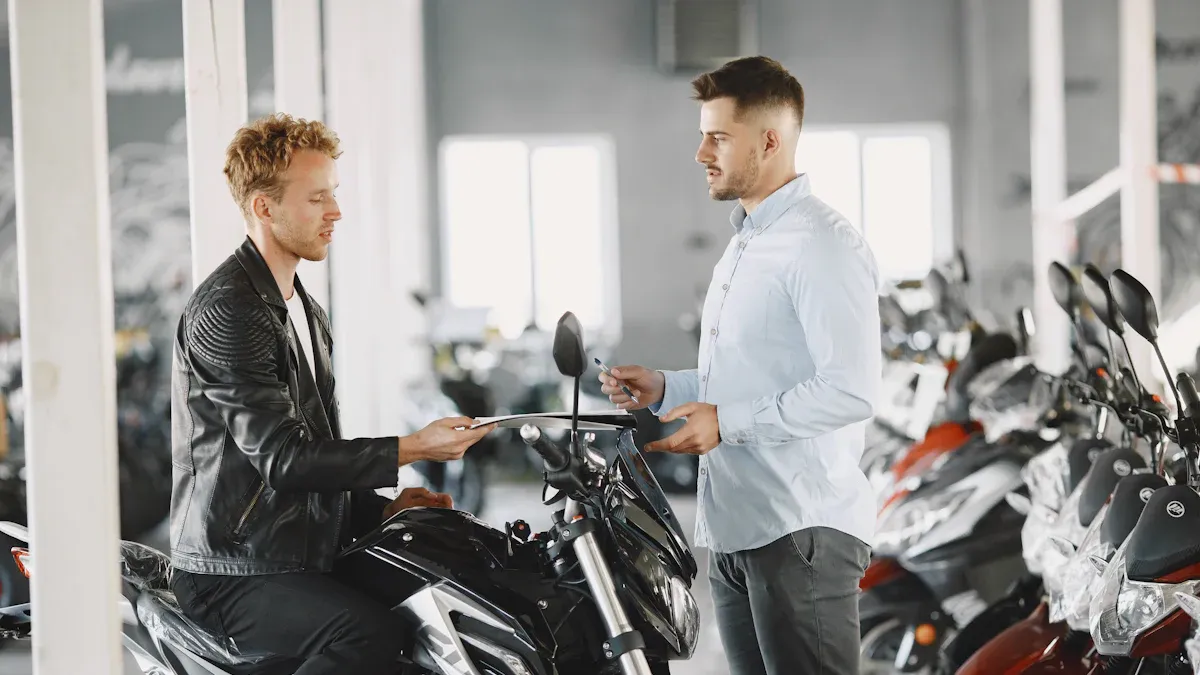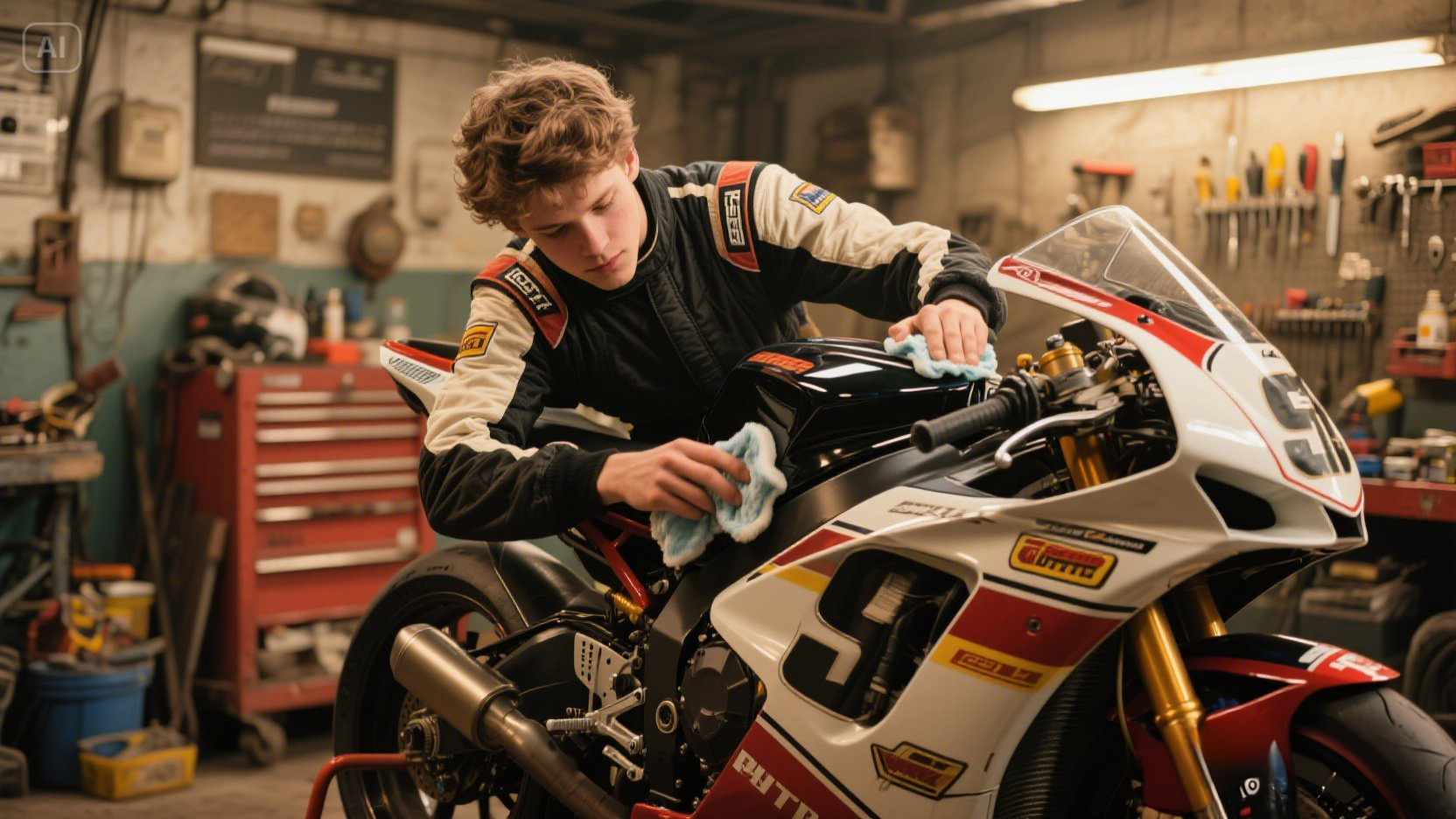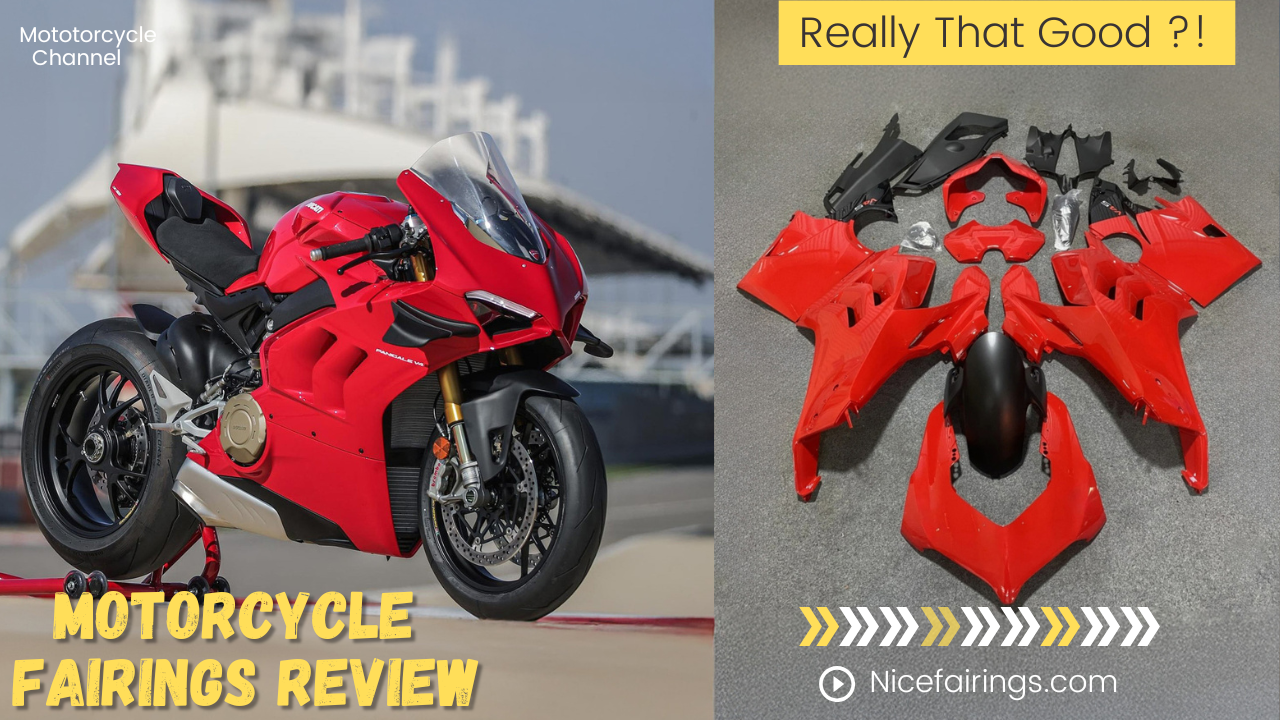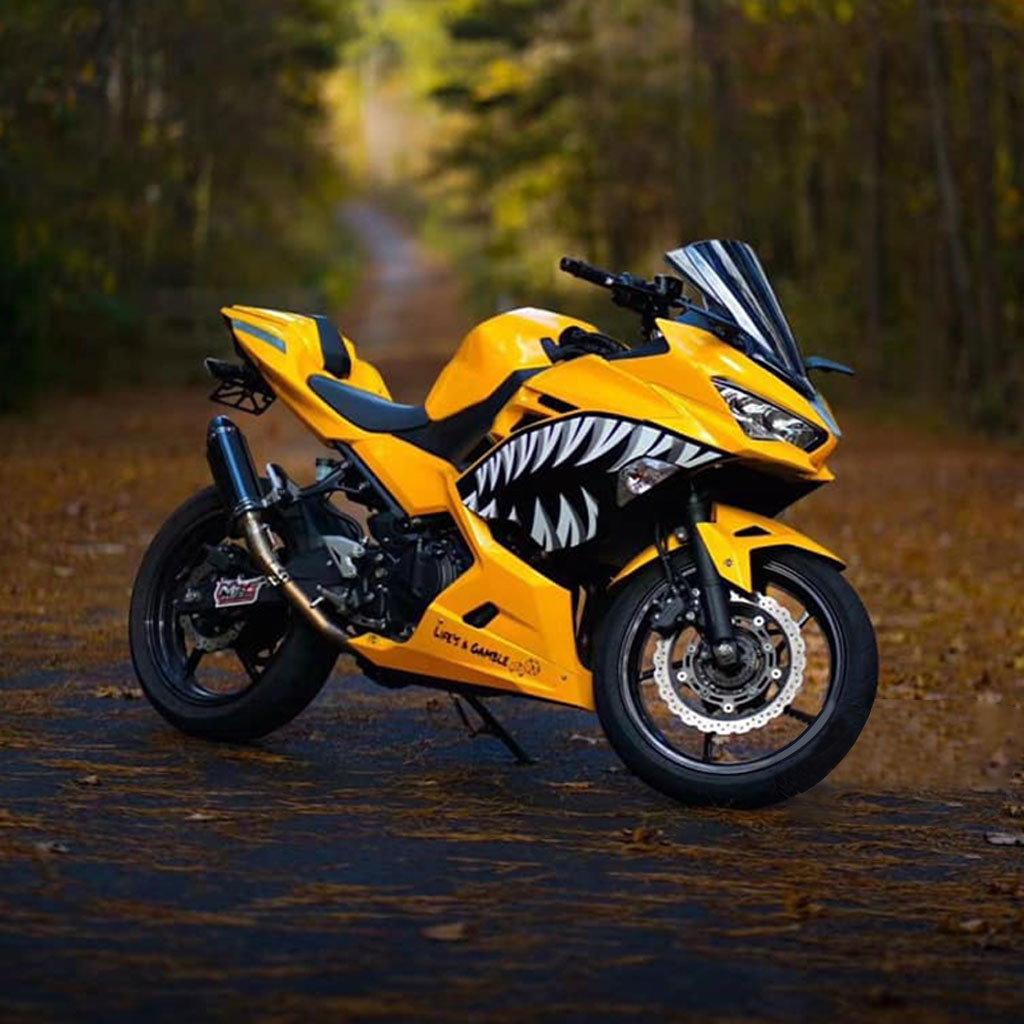How to Assess the Worth of a Used Motorcycle for Resale

When selling a used motorcycle, setting the right price is key. Buyers want a good deal, and you want the most money. Understanding how value drops over time helps you price it well. Motorcycles that are cared for keep their worth better, even when older. Tools like Kelley Blue Book or NADA Guides help you start pricing.
Want to make your bike worth more? Try improving its look. Replace old parts with custom ones from Nicefairings to make it unique. A great first impression can attract buyers and close the sale.
Key Takeaways
Look up similar motorcycles online to find a fair price. Check websites like Craigslist and Cycle Trader for comparisons.
Inspect your motorcycle closely. Clean it and repair any noticeable problems to make it look better and worth more.
The time you sell is important. Spring and summer are the best times because more people want to buy then.
Use guides like Kelley Blue Book to decide a starting price. Base it on your bike's condition and how much people want it.
Set your price a little higher for bargaining. This way, you can lower it during talks without losing money.
Researching the Value of a Used Motorcycle
To price your used motorcycle, research is very important. Knowing what others charge for similar bikes helps you set a fair price. Let’s go through it step by step.
Checking Prices on Online Platforms
Look at websites like Craigslist, Facebook Marketplace, or Cycle Trader. These sites show what sellers ask for bikes like yours. Find listings with the same make, model, and year. Check the condition and mileage too. If your bike has fewer miles or looks better, you can ask for more money.
Tip: Don’t just check asking prices. Look for sold listings to see what buyers actually paid.
Using Reliable Price Guides
Tools like Kelley Blue Book and NADA help you find a starting price. They give values based on condition, mileage, and demand. These guides sort prices into categories, making it easier to decide your bike’s worth.
Here’s how they break down values:
Factor | What It Means |
|---|---|
Suggested Retail | The price experts recommend selling the bike for. |
Private Party Sales | Prices people get when selling directly to buyers. |
Trade-in Value | The amount dealers offer for trade-ins. |
Certified Pre-Owned Value | The price for certified pre-owned motorcycles, if it applies. |
Compare your bike’s condition and features to these categories to find a fair price range.
Watching Market Trends and Seasons
When you sell can change how much you earn. Bikes sell for more in spring and summer when riding is popular. In winter, prices often drop because fewer people buy.
Here are some things that affect prices:
Factor | What It Means |
|---|---|
Age | Older bikes usually sell for less. |
Condition | Well-kept bikes sell for more money. |
Mileage | Bikes with fewer miles are worth more. |
Market Demand | If many people want bikes, prices go up. |
Timing | Selling in busy seasons can get you better offers. |
If you don’t need to sell quickly, wait for peak seasons. Also, check local demand. If bikes like yours sell fast nearby, you might get a higher price.
Evaluating the Condition of a Used Motorcycle
When it comes to selling your used motorcycle, its condition plays a huge role in determining its value. Buyers want a bike that looks good and runs smoothly. Let’s break down how you can evaluate its condition step by step.
Inspecting Physical Condition (Scratches, Dents, Paint)
Start by giving your motorcycle a close look. Check for scratches, dents, or chipped paint. These imperfections might seem small, but they can lower the resale value. A bike that looks well-maintained gives buyers confidence that it’s been cared for.
Here’s a tip: Clean your motorcycle thoroughly before inspecting it. Dirt and grime can hide scratches or other flaws. Once it’s clean, walk around the bike in good lighting. Look at the body panels, fuel tank, and fairings. If you notice any damage, consider fixing it. Small touch-ups or replacing worn-out fairings can make a big difference.
Did you know? Well-maintained motorcycles can retain up to 70% of their resale value. Keeping the exterior in great shape is worth the effort!
Assessing Mechanical Performance (Engine, Brakes, Tires)
The way your motorcycle performs mechanically is just as important as how it looks. Buyers will want to know that the engine runs smoothly and that the brakes and tires are in good condition.
Start by checking the engine. Does it start easily? Listen for unusual noises like knocking or rattling. These could signal bigger problems. Next, test the brakes. They should feel firm and responsive. If they squeak or feel soft, they might need servicing.
Don’t forget the tires! Worn-out tires can be a dealbreaker for buyers. Check the tread depth and look for cracks or uneven wear. If the tires are in bad shape, replacing them can boost your bike’s value and make it safer for the next owner.
Reviewing Mileage and Overall Wear
Mileage is one of the first things buyers check when looking at a used motorcycle. Lower mileage usually means less wear and tear, which makes the bike more appealing. However, high mileage doesn’t always mean the bike is in bad shape. If you’ve kept up with regular maintenance, your motorcycle can still be in excellent condition.
Take a moment to think about the overall wear. Look at the seat, handlebars, and footpegs. Are they in good shape, or do they show signs of heavy use? Replacing worn-out parts can make your bike look newer and more attractive to buyers.
Pro Tip: Keep a record of all maintenance and repairs. Showing buyers that you’ve taken care of the bike can help justify your asking price.
Improving Looks with New Fairings from Nicefairings
When selling your used motorcycle, looks are very important. A clean, stylish bike grabs attention and can get you a better price. One simple way to improve your bike’s look is by changing its fairings. That’s where Nicefairings can help.
Nicefairings makes custom fairings that can change your bike’s style. If your current fairings are scratched or old, new ones can make your bike look brand new. Buyers like bikes that stand out, and custom fairings let you create a unique design that makes your motorcycle special.
Tip: Pick a design that matches your bike’s original colors. This keeps its classic look while adding a modern touch.
Here’s why choosing Nicefairings is a great idea:
Makes Your Bike Look Better: New fairings cover scratches and make your bike look fresh.
Custom Designs: Nicefairings lets you pick colors, patterns, and finishes to match your style.
Raises Resale Value: Bikes with custom fairings often sell for more money. Buyers see them as well-maintained.
Strong and Long-Lasting: Nicefairings uses tough materials that look good and protect your bike.
Picture a buyer seeing your motorcycle for the first time. The shiny, perfect fairings grab their attention right away. They’ll think the rest of the bike is just as well cared for. That’s the power of a great first impression.
Did you know? Custom fairings also protect your bike from dirt, weather, and damage. They’re not just for looks—they add long-term value too!
Upgrading your fairings is an easy way to make your bike more attractive. With Nicefairings, you’re not just fixing old parts; you’re giving your bike a fresh, new personality. When it’s time to sell, this effort can really pay off.
Additional Factors That Affect Resale Value
How Modifications and Accessories Change Value
Changes to your motorcycle can raise or lower its value. Good upgrades, like performance parts or expensive items (e.g., stage kits, exhausts), can make it worth more. But bad modifications or messy paint jobs might hurt its value. Buyers may think custom paint hides damage, making them less likely to pay more.
Here’s a simple guide on how changes affect value:
Modification Type | Effect on Value |
|---|---|
High-quality performance upgrades | Can raise motorcycle value |
Poorly done modifications | Can lower motorcycle value |
Expensive upgrades (e.g., stage kits, exhausts) | Can boost value |
Bad custom paint jobs | Can reduce motorcycle value |
Missing factory parts | Can lower motorcycle value |
Accessories | Usually don’t change value much |
If you’ve made changes, think about what buyers want. Keeping original parts or adding useful upgrades can help you sell for more.
How Location and Demand Change Prices
Where you sell your bike matters a lot. Local demand affects how much people will pay. For example, in cities where motorcycles are popular for commuting, you might get a higher price. In rural areas, fewer buyers might mean lower offers.
Seasons also matter based on location. In cold places, bikes sell slower in winter. But in warm areas, demand stays steady all year. Check your local market to see what buyers want. If bikes like yours sell fast nearby, you can ask for more money.
Why Maintenance Records and Ownership History Matter
Buyers like honesty. Showing that you’ve cared for your bike can make a big difference. Maintenance records prove you’ve done oil changes, replaced tires, and handled repairs. A clear ownership history builds trust, especially if it includes accident details and title status.
Here’s how these details affect value:
Factor | Effect on Value |
|---|---|
Complete service records | Shows care and raises value |
Clear accident history | Helps buyers trust the bike’s condition |
Proof of regular maintenance | Shows the bike is in good shape |
Tip: Keep your documents neat and ready. Buyers like seeing proof of care, and it helps explain your price.
If you don’t have records, start now. Even a simple list of recent work can show buyers your bike is well-maintained.
Setting a Fair Price for Your Used Motorcycle

Combining Market Research and Condition Assessment
To set a fair price, you need to combine what you’ve learned about the market with your bike’s condition. Start by looking at the prices of similar motorcycles in your area. Compare their make, model, year, and mileage to yours. Then, factor in your bike’s condition. Is it in better shape than others? Does it have fewer miles or recent upgrades? These details can justify a higher price.
Don’t forget to consider seasonal trends. If you’re selling during peak riding months, like spring or summer, you might be able to ask for more. On the other hand, if it’s winter, you may need to adjust your expectations.
Tip: Be honest about your bike’s condition. Overpricing it based on wishful thinking can scare off buyers.
Establishing a Competitive Price Range
Once you’ve assessed the market and your bike’s condition, it’s time to set a price range. A competitive range makes your motorcycle appealing without undervaluing it. For example, if similar bikes are listed between $4,000 and $5,000, aim for a price within that range.
Research shows that listings priced too high often stay unsold for longer. This can make buyers think something’s wrong with the bike. On the flip side, pricing too low might make you lose money. According to Allied Market Research, the global used motorcycle market is growing rapidly, which means more competition. A well-priced bike stands out and sells faster.
Pro Tip: Check how long similar listings have been active. If they’ve been up for weeks, their prices might be too high.
Allowing Room for Negotiation
Buyers love to negotiate, so leave a little wiggle room in your asking price. For instance, if you want $4,500, list your bike at $4,700. This gives you space to lower the price without feeling like you’re losing out.
Keep in mind that some buyers will try to lowball you. Stay firm but polite. If you’ve done your research and know your bike’s worth, you’ll feel confident sticking to your range. The National Powersports Auction notes that prices peak during high-demand seasons, so timing your sale can also reduce the need for heavy negotiation.
Did you know? A well-maintained bike with clear records often gets fewer lowball offers. Buyers see it as a safer investment.
Tips for Selling Your Used Motorcycle
Timing the Sale for Maximum Value
When you sell your motorcycle can make a big difference in how much you earn. Timing is everything! Spring and summer are the best seasons to list your bike. As the weather warms up, more people start looking for motorcycles to enjoy the open road. A well-priced motorcycle during these months will likely attract more attention and sell faster.
Take a look at this sales trend:
Month | Sales Trend Increase | Sales Trend Decrease |
|---|---|---|
April | High | N/A |
May | High | N/A |
June | Moderate | N/A |
July | N/A | 17.2% |
August | N/A | 41.3% |
As you can see, April and May are prime months for selling. By July and August, interest starts to drop. Another great tip? Advertise your motorcycle right after major biking events. These events get people excited about riding, and your listing could catch their eye at just the right time.
Preparing the Motorcycle for Showings
First impressions matter. Before showing your motorcycle to potential buyers, make sure it looks its best. Start by giving it a deep clean. Wash off dirt, polish the chrome, and make the paint shine. A clean bike shows buyers that you’ve taken good care of it.
Next, check for small fixes. Replace worn-out parts like grips or footpegs. If the tires are bald or the seat is torn, consider replacing them. These small upgrades can make your bike look newer and more appealing. Don’t forget to gather all your maintenance records. Buyers love seeing proof that the motorcycle has been well-maintained.
Tip: Take clear, high-quality photos of your motorcycle in good lighting. Great pictures can make your listing stand out online and attract more buyers.
Negotiation Strategies to Secure the Best Price
Negotiating can feel tricky, but it’s your chance to get the best price for your motorcycle. Start by knowing your bike’s fair market value. Research recent sales of similar motorcycles, considering factors like mileage and condition. This knowledge gives you confidence and helps you set a firm asking price.
When talking to buyers, stay calm and polite. If someone offers less than your asking price, don’t feel pressured to accept right away. Instead, explain why your price is fair. For example, you can point out recent upgrades or the bike’s excellent condition. A well-researched offer shows buyers you’re serious and makes them more likely to agree to your terms.
Pro Tip: Leave a little room in your asking price for negotiation. For example, if you want $5,000, list it at $5,200. This way, you can lower the price slightly without losing money.
Selling a used motorcycle can be simple with the right steps. First, check its market value by researching similar bikes. Next, look closely at its condition to see how it compares. Think about things like upgrades, where you’re selling, and maintenance history. Use this information to set a fair price that matches its value.
Want to make your bike more appealing? Try adding new fairings from Nicefairings. They can give your motorcycle a fresh look that grabs attention. Follow these tips, and you’ll be ready to sell your bike quickly and confidently!

FAQ
How can I find out my motorcycle’s value?
Look up similar bikes online to compare prices. Use tools like Kelley Blue Book or NADA for accurate estimates. Check mileage, condition, and any upgrades. This helps you figure out a fair price.
Tip: Look at sold prices, not just listed ones, for better ideas.
Do upgrades make my motorcycle worth more?
Sometimes. Good-quality performance upgrades can add value. But bad or messy modifications might lower it. Many buyers like stock bikes or simple upgrades. Keep original parts in case the buyer wants them.
Note: Avoid flashy changes that might not suit everyone’s taste.
How do I make my motorcycle more attractive to buyers?
Clean it well and fix small problems like scratches or worn parts. Adding new fairings from Nicefairings can give it a fresh, stylish look. A clean, well-kept bike gets more attention from buyers.
Pro Tip: Take clear photos in bright light to make your listing stand out.
What’s the best time to sell my motorcycle?
Spring and early summer are the best times. Warm weather makes people want to ride, so demand goes up. Try not to sell in winter unless you live in a warm area where riding is common year-round.
Emoji Tip: 🌞 April and May are great months to sell!
Should I negotiate with buyers?
Yes! Price your bike a little higher than what you want. This gives room to lower the price during talks. Be polite and firm. Show off your bike’s condition, upgrades, and maintenance records to support your price.
Pro Tip: Expect low offers, but don’t feel forced to take them.
See Also
Affordable And Stylish Rebuilt Motorcycles To Watch In 2025
Key Advice For Crafting Your Ideal Motorcycle Experience
Selecting Budget-Friendly Motorcycle Fairings For Your Ride

